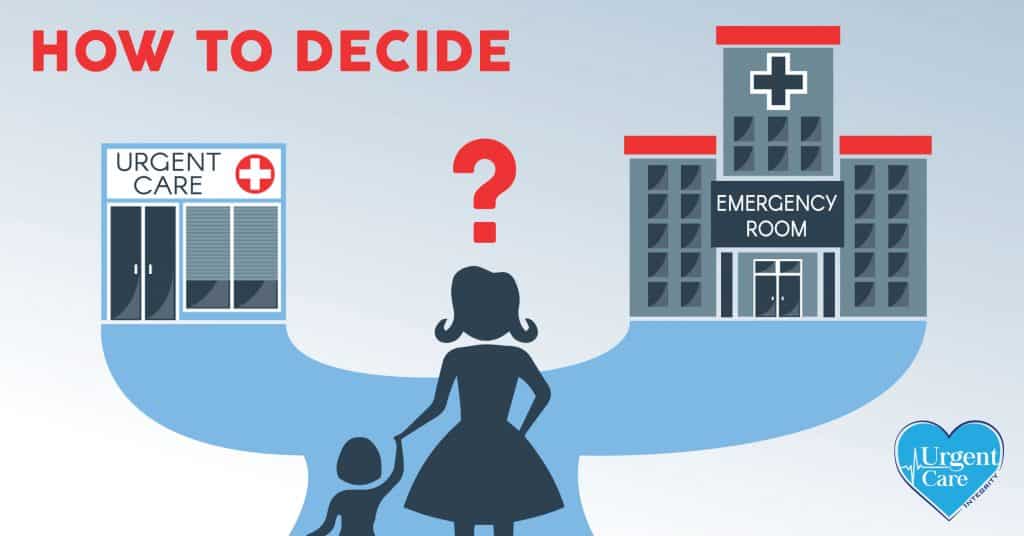
 When sudden health issues arise, making the right choice between visiting an Urgent Care vs. Emergency Room can be crucial to receiving timely and appropriate care. Understanding the differences between these two facilities is essential for making informed decisions during health emergencies. This post aims to clarify the distinctions between urgent care and emergency room services, highlighting which conditions are best treated where.
When sudden health issues arise, making the right choice between visiting an Urgent Care vs. Emergency Room can be crucial to receiving timely and appropriate care. Understanding the differences between these two facilities is essential for making informed decisions during health emergencies. This post aims to clarify the distinctions between urgent care and emergency room services, highlighting which conditions are best treated where.
Understanding Urgent Care Centers
Urgent care centers are designed to address non-life-threatening medical issues that require prompt attention, usually outside regular office hours. They fill the gap between primary care physicians and hospital emergency rooms, offering an efficient, cost-effective option for minor to moderate health concerns. Common conditions treated at urgent care include:
- Minor fractures and sprains
- Flu and cold symptoms
- Ear infections and sore throats
- Minor cuts and burns
- Skin rashes and infections
- Urinary tract infections
Urgent care centers are typically staffed by physicians, nurse practitioners, and physician assistants trained to treat a wide array of health issues. Most centers are equipped with lab and X-ray facilities to aid in diagnosis and treatment.
When to Choose Urgent Care vs. Emergency Room
Opt for urgent care when you need immediate care for a condition that is not life-threatening but can’t wait until your primary care doctor is available. Urgent care centers offer quicker access and shorter wait times compared to ERs, plus the cost of treatment is generally lower.
Understanding Emergency Rooms
Emergency rooms are equipped to handle severe and life-threatening conditions. Open 24/7, they are prepared to deal with complex and critical health issues that require immediate and advanced treatments, including surgical intervention and admission to the hospital. Common conditions that necessitate a visit to the ER include:
- Chest pain or difficulty breathing
- Severe burns
- Deep cuts or bleeding that won’t stop
- Sudden blurred vision
- Stroke symptoms (e.g., sudden numbness, confusion, trouble speaking)
- Severe abdominal pain
- Suspected poisoning or drug overdose
When to Choose the Emergency Room
The ER should be your first choice if you are experiencing symptoms of potentially life-threatening conditions or if advised by a healthcare professional. While ERs can treat any medical problem, using them for non-emergency situations can lead to higher medical costs and longer wait times, potentially delaying care for those in dire need.
Making the Right Choice
Making the correct decision starts with evaluating the severity of the condition. If the situation seems critical or is potentially life-threatening, head straight to the ER. For less severe issues that still require prompt attention, urgent care is a more appropriate and efficient choice.
Conclusion
Understanding the key differences between urgent care vs. emergency room can significantly impact your healthcare experience. By making an informed decision, you ensure that you or your loved ones receive the right level of care at the right time, optimizing health outcomes and managing healthcare costs effectively. Remember, if you’re unsure about the severity of a condition, erring on the side of caution and seeking the highest level of care available is always a safe bet.
To learn more about Family First Urgent Care visit www.familyfirsturgentcareconroe.com or call
- How to Prepare for Your Urgent Care Visit - July 26, 2024
- Pediatric Urgent Care: What Parents Should Know - July 12, 2024
- The Essential Guide to a Home First Aid Kit - June 24, 2024



